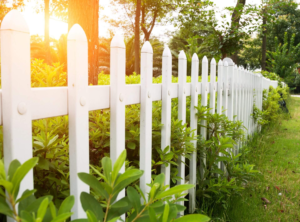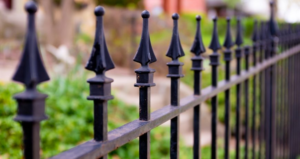Masonry Contractors Charleston SC specializes in constructing structures using brick, stone, concrete, and other materials. They play a vital role in both residential and commercial construction projects, ensuring that buildings are structurally sound and visually appealing.
When choosing a mason, consider their experience and reputation. Check out online reviews from previous clients on platforms like Yelp, Angi, and HomeAdvisor.

Masonry contractors are experienced in building structures and repairs using durable materials like brick, stone, and concrete. Their expertise also extends to creating intricate designs and architectural details, allowing them to help you achieve a renovation that meets both functional requirements and design aspirations.
A qualified mason can work quickly and efficiently to meet your construction timelines. In addition, they can coordinate their work to minimize disruptions that might affect business operations and customers. They are also well-versed in local building codes and regulations, ensuring that all their work is performed in compliance with these standards.
When selecting a masonry contractor, look for one with years of hands-on experience. This experience will enable them to handle a variety of different projects and problems that might arise during the project. They should also be familiar with a range of construction techniques, including the latest innovations and materials. Moreover, they should have strong problem-solving skills, allowing them to quickly and effectively address unforeseen issues.
Additionally, it is important to check whether the contractor has a solid track record of customer satisfaction. You can do this by reading reviews and testimonials on online platforms. Also, ask the contractor for references and photos of their past work. This will give you a better idea of the quality and style of their craftsmanship.
Lastly, you should make sure that the contractor is licensed and insured. This will protect you against any legal liabilities in case of an accident or damage to your property during the construction process.
Choosing a mason without the necessary qualifications could end up costing you more in the long run. Ensure that the contractor is fully licensed and insured by requesting proof of insurance coverage and licensing. In addition, it is advisable to request quotes from multiple contractors and compare their prices. However, be wary of opting for the lowest bid, as this may compromise the quality of your project. Also, be sure to consider the scope of work, materials, and timelines included in each quote.
Licenses
Masonry Contractors typically need a license to work on construction projects. They use a variety of materials to construct and repair walls, partitions, arches, sewers and other structures. They may need a specific license to work on residential or commercial properties, depending on the local laws.
Masons can choose to specialize in certain types of materials or in particular kinds of projects. Some masons choose to focus on residential construction while others prefer the challenges of working on commercial jobs. Choosing the right material for a job is a critical decision for a mason to make, as it can greatly affect how well a project is finished.
Some states require that masons have liability insurance in case they are sued. Having this type of coverage protects the mason in the event that they are sued by homeowners or bystanders. It can also help reduce legal fees and other expenses that may occur during a lawsuit.
In order to be licensed, a mason must pass an examination that tests his or her knowledge of brickwork. Often, the exam includes questions about brick types, mortar and other materials used in masonry. The test is designed to ensure that the mason is qualified to perform all aspects of his or her job.
The code contains provisions governing the design, construction and quality of masonry. It requires that masonry be designed using one of the allowable stress design methods specified in this section or TMS 602/ACI 530/ASCE 5. The code requires that masonry constructed as load-bearing walls be reinforced and adequately anchored to resist gravity and seismic forces. It also requires that masonry chimneys be constructed, reinforced and anchored according to the requirements of this chapter.
In addition to licensing requirements, a mason may need to obtain permits for certain types of work. These permits are typically required by smaller jurisdictions like cities, towns and counties. A mason should contact his or her local building department to find out what the permit requirements are for the particular jurisdiction. In some cases, a permit is not required for minor repairs to masonry. For example, replacing balcony doors or windows does not usually require a permit.
Insurance
Masonry contractors face unique insurance risks due to the nature of their work. They often use heavy machinery and equipment, engage in strenuous physical labor, and deal with construction sites that are challenging to navigate at times. These factors contribute to the high risk of liability claims, property damage, and employee injuries. With the right coverage in place, these risks can be mitigated, allowing you to focus on your business and ensure that your operations are not disrupted by unforeseen circumstances.
There are a number of policies and bundles available that offer comprehensive protection for the masonry industry. Some of these include general liability, workers’ compensation, commercial auto, and inland marine.
General liability is a standard part of most business insurance packages and covers incidents that could result in bodily injury or property damage to third parties. For instance, if someone trips over a brick while entering your building or your work inadvertently damages a neighbor’s property, general liability can help pay for medical expenses and legal fees. Additionally, general liability can also cover advertising injury such as libel or slander and intellectual property loss including copyright infringement.
Workers’ compensation is another essential policy that protects your company if one of your employees is injured while working on a project. This type of coverage pays for medical care and replaces a portion of lost wages, helping you to keep your team productive. It is also important to note that in most states, workers’ compensation is mandatory for companies with employees.
Inland marine insurance, which is a specific type of commercial auto insurance, covers the vehicles used by your business to transport materials and equipment to and from job sites. This type of insurance can cover damage or theft that occurs while your vehicles are in transit, during loading and unloading, or at a job site itself. It can even provide coverage for your tools and equipment that are in storage away from your main business premises.
Finally, professional liability insurance, which is commonly referred to as Errors and Omissions (E&O) insurance, can help protect your masonry business against claims made by clients for mistakes that you have made on their projects. This type of insurance can cover your legal defense costs and settlements resulting from allegations of negligence, misrepresentation, or failure to perform the services agreed upon in your contract.
Portfolio
Masonry contractors are more than just builders. Their skill and creativity make them sculptors of dramatic landscapes. They add value and beauty to residential and commercial properties. But finding the right contractor requires considering many factors. Whether you’re looking for a mason to build a new patio or repair an old chimney, you should request work samples from potential candidates. This will give you a good idea of the quality of their workmanship and help you decide whether they’re a good fit for your project.
Quality masonry contractors are happy to provide samples of their previous work. They’re also ready to share their licenses and insurance coverage. This helps you feel confident that the contractor follows industry standards and is accountable for his or her work. If you’re not sure what to look for, a good place to start is with online reviews and recommendations. However, personal recommendations and direct consultations remain crucial.
The most important thing to consider when choosing a mason is the quality of their work. You want to ensure that the finished product is high-quality and will stand up to the elements. The best way to do this is by asking for a portfolio of past projects. The portfolio should include photos and physical samples of the completed work, as well as detailed descriptions of each project. It’s a good idea to organize the portfolio by project type so that you can easily find what you need.
In addition to a portfolio of past projects, you should also ask a mason about his or her work experience and education. The most qualified masons have extensive training and experience in a variety of masonry forms. They can construct, repair, and restore brick, stone, concrete, and other materials. The experience and skills of a mason can be a significant factor in the overall cost of a project.
It’s also a good idea to compare prices for different types of masonry. For example, natural stone is more expensive than brick but offers durability and aesthetic appeal. You can also choose to use recycled materials like reclaimed bricks and concrete, which help reduce waste and support local economies. Another option is to use permeable pavers, which allow water to filter through, reducing runoff and pollution.

